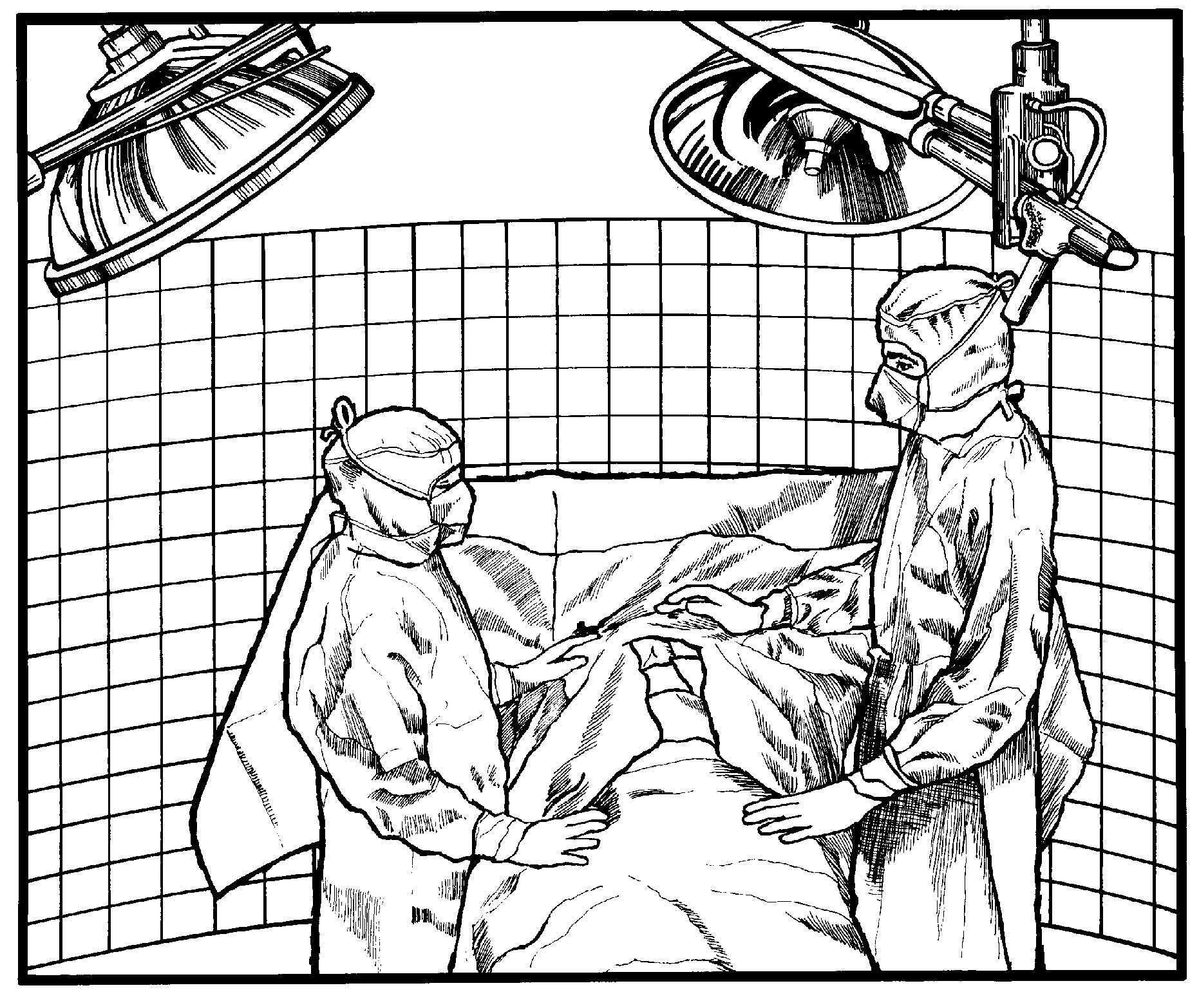Introduction to the Operating Room
LESSON 1: ORIENTATION
1-8
1-8. LIGHTING
a. Ordinary lighting for the OR is adequately provided by fixtures recessed into the ceilings. To provide additional light over the operative area, there is a special overhead light fixture (see figure 1-6) suspended from the ceiling. This fixture is designed to provide shadow-free lighting on the operative area, to give off a minimum amount of heat, and to be easily cleaned and adjusted. The specialist should practice adjusting this light so that he can make changes quickly and accurately during surgery. The ceiling lights and the operating lights are on different circuits to avoid confusion and delay if a fuse burns out.
Figure 1-6. Operating room lights.
b. Portable lights are necessary for satisfactory illumination in some operative procedures such as vaginal or rectal surgery. Storage battery lights should be provided for emergency lighting during a power failure. These must be inspected, tested, and recharged at frequent intervals, as prescribed by local policy.


